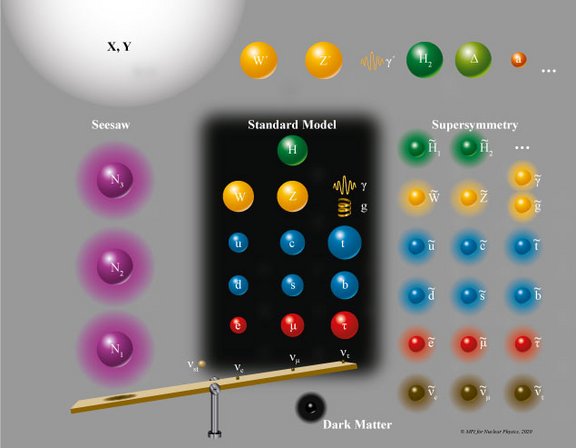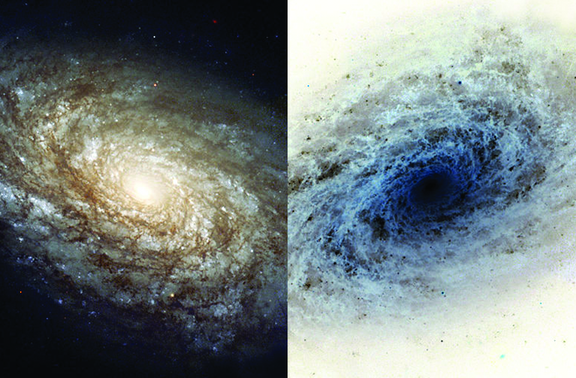The Origin of Mass – Physics Beyond the Standard Model
The Standard Model of elementary particle physics successfully describes all known elementary particles (and corresponding antiparticles): each 6 quarks and leptons. In addition, there are gauge bosons mediating the particle’s interactions, and the Higgs boson. Its discovery on 2012 opened a number of fundamental questions that are addressed by theoreticians at the MPIK.
Both dark matter and the proof of non-zero neutrino masses as well as some further theoretical deficiencies require an extension of the Standard Model of elementary particle physics which seems to be valid only up to a certain energy, from which on so-called new physics comes into play. Theoreticians of the MPIK are studying supersymmetry and Grand Unified Theory as promising extensions of the Standard Model in connection to present and future particle physics experiments, and cosmology.
A lot of theoretical work is done at MPIK on the origin of neutrino masses and mixings via basic and phenomenological studies. The so-called seesaw mechanism is a way to explain the smallness of neutrino masses based on the presence of new heavy particles, which are in fact predicted by many theories beyond the Standard Model. Neutrino masses and dark matter may have a common origin. The overall aim is a deeper understanding of the fundamental laws of nature.
Matter and Antimatter – Search for the Crucial Difference
There is no indication that anywhere in the visible Universe considerable amounts of antimatter exist. Since particles and antiparticles must have been created in equal amounts in the Big Bang, there must be a fundamental difference between them. Else, they would have completely annihilated, leaving a Universe filled with pure radiation.
This symmetry violation must have occurred in the early Universe, but the Standard Model of elementary particle physics can’t explain the observed asymmetry. A scenario for this, in which neutrinos play a crucial role, is the so-called leptogenesis which is explored by MPIK theorists. Here, the asymmetry of light particles subsequently induces the observed asymmetry of heavy particles.
The LHCb experiment at the Large Hadron Collider (LHC) of CERN in Geneva searches for matter/antimatter differences. Besides many other particles, in proton-proton collisions so-called B mesons are created, heavy particles consisting of each a light quark and a heavy antiquark; and reversely for their antiparticles. Measurements of their decays that lead to equal amounts of matter and antimatter showed that there are processes in which antimatter disappears faster than matter – however as predicted by the Standard Model of elementary particle physics.
Measurements of the masses as well as of the magnetic moments of the antiproton and the proton in Penning traps didn’t yet reveal any differences despite the highest precision. But further advanced measurement techniques may resolve the puzzle.

